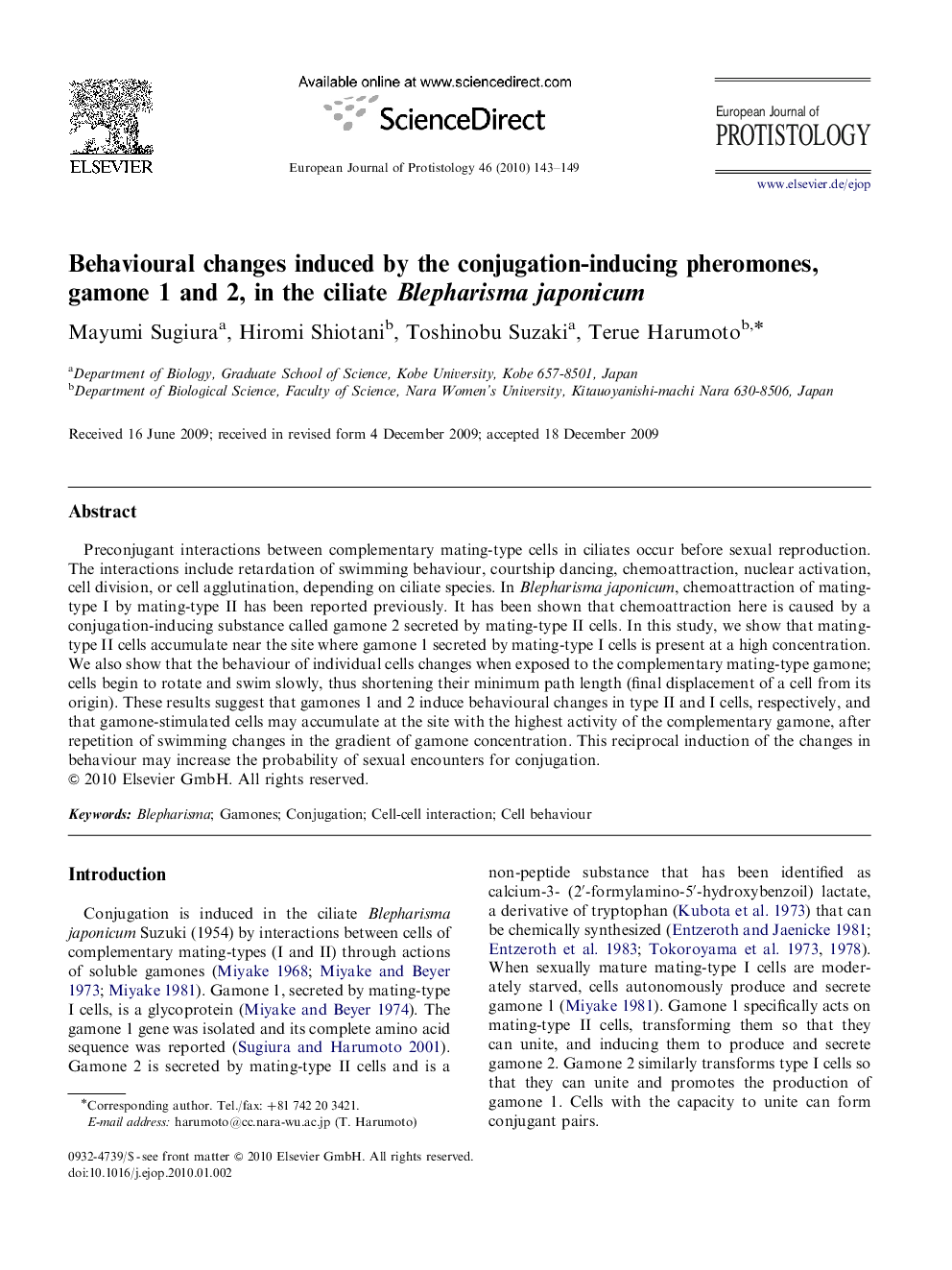| Article ID | Journal | Published Year | Pages | File Type |
|---|---|---|---|---|
| 2047250 | European Journal of Protistology | 2010 | 7 Pages |
Abstract
Preconjugant interactions between complementary mating-type cells in ciliates occur before sexual reproduction. The interactions include retardation of swimming behaviour, courtship dancing, chemoattraction, nuclear activation, cell division, or cell agglutination, depending on ciliate species. In Blepharisma japonicum, chemoattraction of mating-type I by mating-type II has been reported previously. It has been shown that chemoattraction here is caused by a conjugation-inducing substance called gamone 2 secreted by mating-type II cells. In this study, we show that mating-type II cells accumulate near the site where gamone 1 secreted by mating-type I cells is present at a high concentration. We also show that the behaviour of individual cells changes when exposed to the complementary mating-type gamone; cells begin to rotate and swim slowly, thus shortening their minimum path length (final displacement of a cell from its origin). These results suggest that gamones 1 and 2 induce behavioural changes in type II and I cells, respectively, and that gamone-stimulated cells may accumulate at the site with the highest activity of the complementary gamone, after repetition of swimming changes in the gradient of gamone concentration. This reciprocal induction of the changes in behaviour may increase the probability of sexual encounters for conjugation.
Related Topics
Life Sciences
Agricultural and Biological Sciences
Agricultural and Biological Sciences (General)
Authors
Mayumi Sugiura, Hiromi Shiotani, Toshinobu Suzaki, Terue Harumoto,
